Kiwis ‘best at marketing own wine’ (NZ)
The few wine companies owned by New Zealanders need to retain the status quo to benefit the country’s economy, culture, and reputation overseas, says Villa Maria Estate owner and managing director Sir George Fistonich. In an industry dominated by foreign ownership, Sir George is one of the New Zealanders who owns a wine company. He said it was important that the remaining few wine companies that were New Zealand-owned remained so, as other foreign-owned companies weren’t as passionate about promoting the wines or the country, reports The Marlborough Express.
